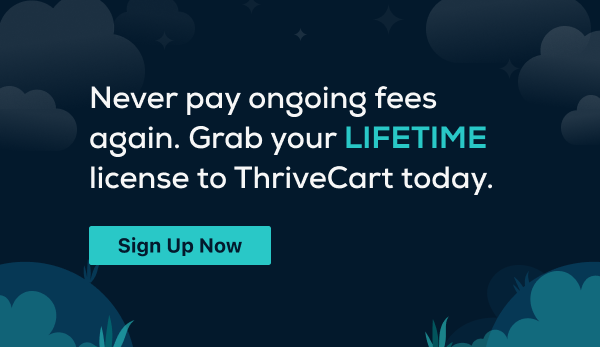Imagine seeing your product on a popular website or social media platform. It’s beautifully styled, likely being used in a realistic and relatable environment that showcases its best features. The imagery is unique and appeals to your target audience… but your marketing team didn’t have to shell out time or money to put that photoshoot together. Nice, right?
Most people think so… no wonder affiliate marketing programs are on the rise. Affiliate marketing campaigns are both low-risk and cost-effective, and they’re equally applicable to small businesses and national corporations. That’s probably why affiliate marketing is valued at more than $17 billion as of 2023, and why 16 percent of online orders are channeled through affiliate marketing models.
It’s clear that affiliate marketing strategies are effective for businesses of all sizes. But how should you implement yours? Let’s take a look at seven of the most effective strategies you can put in place, and how exactly you can do it.
What is an Affiliate Marketing Program?
Affiliate marketing programs involve a parent company that works with bloggers, influencers, and content creators, who promote the company’s product(s) and/or service(s) in exchange for some form of payment or commission.
By partnering with affiliates, companies are able to share their offerings to a much wider audience – and usually for a lower cost than traditional advertising within that target market. Meanwhile, by working as affiliate partners, online personalities and influencers can monetize the online community they’ve built on social media or through their websites. They generate passive income by promoting products they believe in, and gain a commission or percentage of any sales they generate for the parent company.
Tracking Affiliate Marketing Performance
If you’re implementing an affiliate marketing program, there’s a lot you’ll need to keep track of: everything from commission rates, affiliate coupon codes, referrals, and new customers to which commissions have already been paid out.
Beyond the basics of program management, though, tracking the details of your affiliate program will also show how influencers drive sales by reporting on the digital marketing techniques they are using. Noticing what works for them will help you learn over time so that you can do more of what works in your own promotions.
The easiest way to track affiliate performance is to use an affiliate marketing management software that provides a detailed overview of your participants and payouts, as well as helps you identify the best affiliate marketing strategies.
We will take a look at software options below. Before that, though, let’s take a quick look at payment models for this type of online marketing.
Payment Models and Commission Rates
Many people, when first starting out, are overwhelmed by the number of ways to manage affiliate payments. The good news is, with the right tools, it becomes much easier to do.
There are several types of affiliate commission and payment options, but these are the most common:

- Pay-per-impression: Some affiliate models pay every time a viewer sees an ad related to your product. If they were to place a banner ad on their blog, for instance, you would pay a small sum each time a visitor scrolled past it while reading the post in which it was embedded.
- Pay-per-click: Each time someone clicks on your affiliate’s link, either through their social media bio or in a blog post, you pay them a sum of money. Clicks are very valuable because they are the first step on the buyer journey that eventually leads to sales.
- Pay-per-lead: Some affiliate marketing models don’t pay until a target becomes a lead. Once they sign up for your email list or begin a free trial, for instance, you might pay your affiliate. Because it’s harder to get someone to do this, you can expect to pay more than you would for a click or impression.
- Pay-per-sale: This is the next level, building on click and then lead. Again, expect to pay higher commission rates for this than for any of the previous strategies, given the increased difficulty to acquire the sale.
- Multi–tier affiliate programs: This is a program that combines graduated commission levels for the previous strategies, so that the better your affiliate performs for you, the more they can earn in exchange. It enables you to pay your affiliates for all stages and motivates them to work hard at each.
- Pay-per-call: In some cases, telephone calls are the desired outcome. This is especially true for those offering bookable services, but can work for businesses of all types. If you’re trying to drive phone calls where you can form a relationship with your prospects, this approach is worth considering.
- Bonuses: If affiliates do particularly well, you can offer bonuses. For instance, if they hit a certain target for any of the “pay-per” levels, then you might add an additional amount on top. Letting affiliates know that this is an option will increase the chances of them trying to reach targets, and result in more marketing for you!
- Recruitment rewards: Loyalty programs are often a good strategy, and you can modify them for affiliate marketing. Instead of paying when a customer signs up another customer, though, you can bonus your affiliate when they bring someone else on board for your affiliate program.
Now that you understand the basic funding your affiliate program will need, what are the best strategies to use? We’ll take a look at specifics in the following section.
7 Proven Affiliate Marketing Strategies
Below you’ll find the best affiliate marketing tips and strategies for use across email, blog, social media platforms, and other small businesses’ e-commerce outlets.
At the end of the day, what makes for successful affiliate marketing is whether or not your partner and their efforts get results: high conversion rates, more traffic to your sites and social accounts, and better profit margins. In addition to using smart tools and API methods to manage your affiliates, here are seven of our favorite ideas to try today.

1. Choose the Right Affiliates for Your Niche
Being selective with the affiliates you let into your program is a good first step. Choose the wrong ones, and not only will you waste your time onboarding and managing them, but they could also reflect poorly on your brand. You want your partners’ marketing efforts to be worthwhile for both of you, and that comes down to selecting the right affiliate for the job.
What does that mean? In a nutshell, while there’s no perfect way to ensure you get the right person for your demographics, you can increase the chances of doing so by paying attention to the following aspects:
- Authority: Does this person have the right to speak on this subject? If you sell skincare products, do they have a thorough skincare routine on which to base their knowledge? If you sell homeschool curricula, do they homeschool their children? And so forth.
- Engagement: Beyond having an established following—which is important, too—but is this person’s audience engaged? If a potential affiliate has 30,000 followers on Instagram but really low engagement on their posts, how much engagement will they really drive when they start promoting your brand?
- Conversion rates: The obvious next question: Is the affiliate just talking about products and services, or do they generate meaningful sales? We’ve all seen huge social accounts with very little movement on their videos and posts despite the best calls to action. Instead of trusting numbers, dig deeper to find conversion information.
The best affiliate marketing strategies take care to match up the affiliate and the niche so that the affiliate’s audience is far likelier to be interested when they share your products.
2. Build a Diversified Affiliate Network
If you want to drive sales from your target audience and succeed at content marketing, consider working with a high-quality affiliate network.
An affiliate network is an intermediary between you and your affiliates. Not only will it help you find people who can increase the visibility of your brand, it will help you knit together the separate buckets of your target audience.
Alternatively, you can attempt to build your own network by intentionally recruiting a strategic assortment of affiliates, each with expertise in various areas that your product represents.
Either way, building out your web of affiliate partners enables you to sell different products and services to different people through different affiliates—without having to do much of the actual selling yourself.
3. Collaborate With Influencers
Influencers and bloggers are content creators with big audiences. They are therefore great partners to help you drive sales. Plus, because they often create photographic, A/V, and other assets, they’re a powerful source of content that you can post on your own social channels or website.
Their use goes beyond the anecdotal. According to recent statistics, “88% of consumers are inspired by products or services that their favorite influencer promotes,” while “76% of … business owners find it the easiest method for monetizing their business.”
When looking for influencers to promote your goodies on YouTube videos, through an email list, as bloggers, or on a social platform, there are a few factors to keep in mind.
First, it’s nice if they’re already familiar with influencer marketing. That’s not to say a newbie can’t do right by your business. However, you’ll have an easier time if they already know the ropes. Do a scroll through their feed to see if they’re promoting anyone else’s products, which is a good sign.
Second — and we mentioned this earlier — make sure they have a platform that attracts views. It doesn’t have to be large, mind you. Engagement is just as important as size. Here’s a quick litmus test: divide the number of likes on a post or reel by the number of followers the account has. If the resulting number is higher than 0.1 (10 percent), then they’ve got an engaged audience.
Last, make sure they’re someone you want representing your brand. If your audience has strong political views, then an influencer who is espousing the opposite ones could create trouble for you. Ideally, they won’t focus strongly on religion, politics, or other divisive topics.
4. Provide High-Quality Content for Social Media
To this point, we’ve discussed how beneficial it is to work with affiliates who can provide great content to you. True, one of the best affiliate marketing strategies for your online business is to work with people who can create assets such as photos and videos.
However, not all influencers are equally skilled at this. And even if they are, it’s extremely helpful to provide them with an array of supplemental marketing materials and content for them to share on their social channels, blogs, or other apps and platforms. This will help them nail down your voice, your value propositions, and the way you talk about your product, so they can do the same.
Case in point: Perhaps you have an affiliate that does great video tutorials, but their cover photos are dark and poorly edited. You can significantly improve the results of their campaigns if you send cover photos pre-sized for YouTube or TikTok. You can use this same strategy to increase the quality of photos and videos on any other channel as well.
5. Optimize Landing Pages for Conversions
Your affiliates can only be as good as your landing pages. Even if they’ve got the most engaged audience and the most compelling PPC, social media, or email marketing campaigns, you won’t get conversions if your landing page has terrible user experience or interface issues.
This is important because too many businesses spend time creating robust affiliate programs, only to see limited results. But without intentional design and time spent building high-converting landing pages, even the best efforts result in prospects clicking over from the affiliate website/blog or social post to the product landing page, then finding themselves confused and leaving.
Take the time to design a clear landing page with powerful calls to action. Figure out where it sits in your conversion funnel and support it before (with your affiliate program) and after (with your checkout process). And most important, track each metric separately, so you can determine how well you’re doing.

6. Strategize Affiliate Promotions and Coupons
Affiliates are always looking to make money, and customers are always looking for a deal. The best affiliate marketing strategies marry these two motivators together with affiliate promotions and coupons.
Here’s how it works:
- You create specific coupon codes or discounts for each affiliate.
- Your affiliates post it wherever applicable, from their social bio to the top of a blog post or in the chat sidebar of a webinar. Maybe they even share the coupon code in a popular podcast that they’re a guest on, or at an event they’re speaking at.
- When someone uses that code, the affiliate gets a small cut or reward.
- The affiliate makes money as others try your products, further motivating them to create more content.
The best part is, you can offer relatively light discounts (10 percent, say) and still see good results, because you’re making use of the like-know-trust factor your affiliates have built up with their audiences. Affiliates, meanwhile, will earn the same commissions they normally receive—just potentially more of them, as coupons tend to drive additional conversions.
7. Use an Affiliate Marketing Tool/Software
Although affiliate marketing is an amazing strategy for growing your brand, it can quickly get out of hand. When you work with dozens (or hundreds) of partners without a dedicated routine, you might suddenly find yourself with piles of notes, Excel spreadsheets, and overwhelming DMs.
Instead, try an integrated tool or software that will help you build your program from the ground up. A decent platform should enable you to manage affiliate promotions and discount codes, help track commissions and conversion rates, and increase the lifetime value of both your customers and your affiliate partners.
With the right tool, you can monitor which of your campaigns do well (webinars? Snapchat posts? email blasts?) and which need work. You can also reach out to affiliates and let them know how they’re doing, plus manage your payments to them through a handy online portal.
The most important affiliate marketing strategy of all, though? Don’t wait.
Incorporating Strategies Into Your Affiliate Program
Which of the above affiliate sales and online business strategies work best will vary from entrepreneur to entrepreneur. With a startup, for instance, you might benefit most from referral programs and affiliate strategies that have a high conversion rate. With large businesses, your target might be a new product or other metrics.
Whatever the case, the above tips for affiliate marketing campaigns all have their benefits. However, they only work effectively if you have the right marketing tools to enable sharing affiliate products and paying out affiliate commissions.
That’s where ThriveCart helps. With powerful affiliate features, you can easily set up programs, bring people on board, and modify affiliate commissions. There’s very little learning curve, moreover, meaning you can get up and running quickly too.ThriveCart is your all-in-one solution for creating high-converting sales funnels for your products, and managing a strategic affiliate marketing program. Sign up for ThriveCart today and watch your online sales and affiliate promotions take off.





